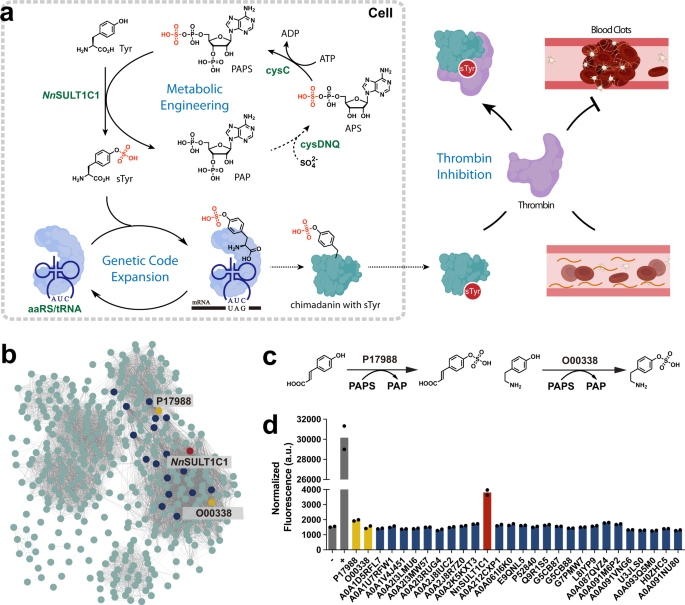がん探索分子が膀胱がんの診断薬・治療薬として有効であることを示す研究成果。 Research shows that a cancer-seeking molecule can successfully target bladder cancer with diagnostic and therapeutic agents
2022-09-19 ロードアイランド大学(URI)
研究者らは、今回の発見が、筋層非浸潤性膀胱癌患者におけるpHLIPを用いた治療法の有効性を検証するための臨床試験の可能性を示すものであるとしている。
pHLIP(pH-Low Insertion Peptideの略)分子は、一部の単細胞生物が光をエネルギーに変換することを可能にする膜タンパク質であるバクテリオロドプシンに由来している。バクテリオロドプシンは、7つのペプチドヘリックスが結合したタンパク質複合体である。エンゲルマン教授の実験により、そのうちの1本(後にpHLIPとして知られるようになる)が、周囲のpHが低いときにのみ細胞膜を通過できることがわかった。
さらに、pHLIPに他の分子(化学療法薬、免疫調節薬、腫瘍の画像化に役立つ蛍光分子)を結合させることができることも明らかにした。
がん治療の一環として膀胱を摘出する必要がある患者さん26名を選び、膀胱を摘出した後、pHLIP®分子と蛍光分子であるICGを組み合わせた溶液を注入した。そして、膀胱鏡(膀胱内に設置する小型カメラ)を使って、それぞれの膀胱の内部を観察した。その結果、pHLIP-ICGは高い特異性と感度で腫瘍を照らし出すことがわかった。実際、pHLIP-ICGは、広く使われている診断方法と比較して、がんの検出率を17%向上させた。
この結果は、pHLIP-ICGが蛍光誘導手術の可能性を持っていることを示唆している。
<関連情報>
- https://www.uri.edu/news/2022/09/molecular-delivery-system-developed-at-uri-shows-promise-against-bladder-cancer/
- https://www.frontiersin.org/articles/10.3389/fruro.2022.868919/full
pHLIP-ICGによる膀胱尿路上皮癌のターゲティングとpHLIP-amanitinによる尿路上皮癌細胞増殖の阻害 Targeting bladder urothelial carcinoma with pHLIP-ICG and inhibition of urothelial cancer cell proliferation by pHLIP-amanitin
Anna Moshnikova, Borivoj Golijanin, Ali Amin, Joshua Doyle, Ohad Kott, Boris Gershman, Michael DuPont, Yujing Li, Xiongbin Lu, Donald M. Engelman, Oleg A. Andreev, Yana K. Reshetnyak and Dragan Golijanin
Frontiers in Urology Published:24 August 2022
DOI:https://doi.org/10.3389/fruro.2022.868919

Acidity is a useful biomarker for the targeting of metabolically active cells in tumors. pH Low Insertion Peptides (pHLIPs) sense the pH at the surfaces of tumor cells and can facilitate intracellular delivery of cell-permeable and cell-impermeable cargo molecules. In this study we have shown the targeting of malignant lesions in human bladders by fluorescent pHLIP agents, intracellular delivery of amanitin toxin by pHLIP for the inhibition of urothelial cancer cell proliferation, and enhanced potency of pHLIP-amanitin for cancer cells with 17p loss, a mutation frequently present in urothelial cancers. Twenty-eight ex-vivo bladder specimens, from patients undergoing robotic assisted laparoscopic radical cystectomy for bladder cancer, were treated via intravesical incubation for 15-60 minutes with pHLIP conjugated to indocyanine green (ICG) or IR-800 near infrared fluorescent (NIRF) dyes at concentrations of 4-8 μM. White light cystoscopy identified 47/58 (81%) and NIRF pHLIP cystoscopy identified 57/58 (98.3%) of malignant lesions of different subtypes and stages selected for histopathological processing. pHLIP NIRF imaging improved diagnosis by 17.3% (p < 0.05). All carcinoma-in-situ cases missed by white light cystoscopy were targeted by pHLIP agents and were diagnosed by NIRF imaging. We also investigated the interactions of pHLIP-amanitin with urothelial cancer cells of different grades. pHLIP-amanitin produced concentration- and pH-dependent inhibition of the proliferation of urothelial cancer cells treated for 2 hrs at concentrations up to 4 μM. A 3-4x enhanced cytotoxicity of pHLIP-amanitin was observed for cells with a 17p loss after 2 hrs of treatment at pH6. Potentially, pHLIP technology may improve the management of urothelial cancers, including imaging of malignant lesions using pHLIP-ICG for diagnosis and surgery, and the use of pHLIP-amanitin for treatment of superficial bladder cancers via intravesical instillation.


